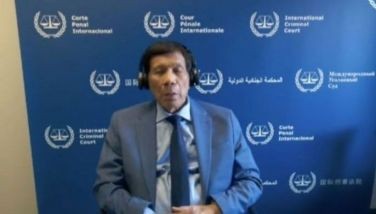Directions

In no other country is the Chief Executive’s annual budget speech an event of so much to-do than it is here.
Large demonstrations are routinely organized to protest a speech that has not yet been delivered. Politicians of every stripe angle relentlessly to get their piece of media attention, often by saying the most ridiculous things. Every segment of the ideological band wants its version of things, its shade of the prism, magnified as the Truth.
When the American president delivers his annual State of the Union Address — after which the Filipino president’s State of the Nation Address is modeled — there is really very little fuss about it. It is, at best, an excuse for members of the US Congress to buy a new tie. No one takes to the streets to burn effigies and act like clowns. Broadcast journalists do not buttonhole politicians after the speech is delivered, extracting a “different take” on the subjects covered by the speech.
There could be no “different take” on a Chief Executive’s point of view. The Chief Executive’s point of view is privileged. It is the view from the commanding heights of presidential leadership and cannot be treated as merely equal to any worm’s eye view of the world.
It is an outline of the directions and priorities taken by those mandated to manage the affairs of the nation. Those directions and policies are, in principle, validated by a democratic exercise. When one aspires to lead a nation, it is presumably on the basis of a set of directions and policies.
When one is voted into office, it is taken that a consensus has been formed around those directions and priorities. That has to be taken, otherwise there will be dividing line between democracy and constant chaos.
One either agrees or disagrees with the package of directions and priorities embodied by an administration tasked with realizing that package. If one disagrees with that policy package, the basis of disagreement ought to be a complete alternative package. Definitely not a cheap soundbite or a bitter quip.
It is the responsibility of those who disagree with the prevailing package of directions and policies to offer the public an alternative package and a political vehicle to install that alternative as the governing package. Short of that, every wry comment or unintelligent political sniping is simply irresponsible.
More basic, the debate about the State of the Nation Address is never about whether it is True or Untrue. That is how one polling organization so wrongly framed the debate. On that wrongly framed question, a set of outrageous statistics was produced, duly covered by uncritical sections of media.
How, in Heaven’s name, may a set of priorities and directions be True or Untrue?
It is, after all, the governing set of priorities and directions. It is the set of priorities and directions that are subsequently funded by the branch of government that holds power over the nation’s purse in a piece of legislation called the National Appropriations Act.
How, in Heaven’s name, can that be True or Untrue? The survey question enforces on respondents a certain ignorance about what the process really is and what the high-profile presidential speech is actually about.
It is survey questions like this one that cause public policy discourse to be so degraded. No wonder our civic discourse has become so banal.
I suspect there are two main reasons why such a curious frenzy surrounds the delivery of the executive branch’s budget proposal to the maiden session of Congress. The first is an event, the second pertains to the requirements of mass media.
The event happened on
A number of large demonstrations were held in the weeks following that ugly incident, mainly to protest police brutality. That whole season of dissent was later called The First Quarter Storm.
The Storm enjoys a hallowed place in the mythology of the radical Left in Filipino politics. It has been glorified no end. It has become an ideological fetish: the enchantment with the thought that an afternoon of street violence will spark a nationwide revolt.
The second principal reason why each year’s SONA always ends with a cacophony of many voices is the requirement of the broadcast media for as many talking heads and as many shades of opinion as possible. That is to provide variety to the coverage, some dramatic tension brought about by the appearance of contestation.
But in the erroneous application of the principle of equal space and equal time for all, the media coverage loses its sense of what is important and what is not. What is valid and what is invalid. It gives parity to the view from the commanding heights and the view from the ideological foxhole.
In the babble that fills up broadcast time, the view of the expert is treated equally with the opinion of the moron. And in that babble, we lose all sense of a debate over directions and priorities or the merits of one policy package against the other. All intelligent debate is lost under the cascade of so many politicians wanting to grandstand.
But that, certainly, could not be more unjust than forcing respondents to a survey question to choose whether a package of directions and priorities was True or Untrue.
- Latest
- Trending

























